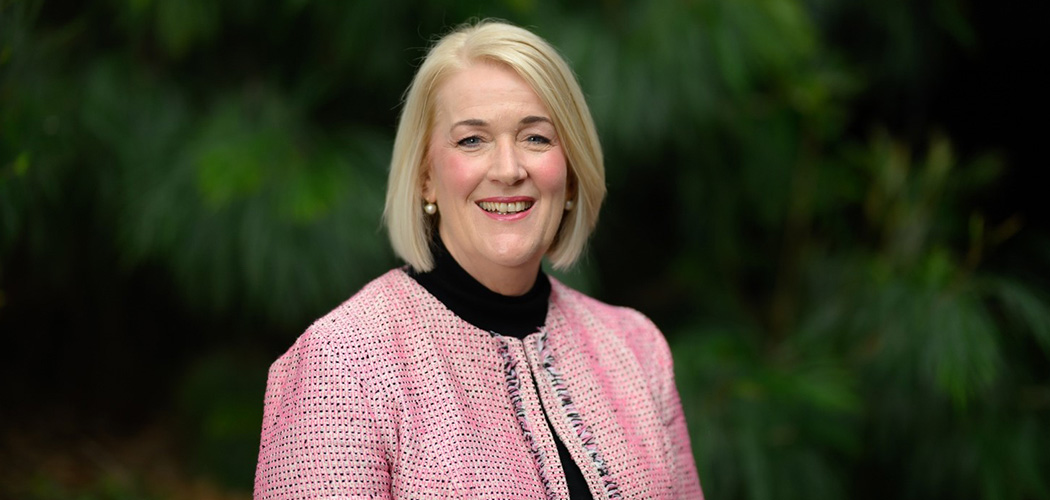Australia is facing a shortage of more than 70,000 nurses by 2035, according to national projections revealed in the Department of Health and Aged Care’s Nursing Supply and Demand Study.
The study used data collected between 2014 and 2022 to forecast the supply and demand for nurses over the next 12 years. The model split the nursing workforce into five sectors – aged care, acute care, primary healthcare, mental health, and other sectors – predicting what could happen if nothing was done to address challenges.
Key findings
While the number of nurses in Australia continues to rise, the community’s healthcare needs are growing quicker.
The study projects a national undersupply of 70,707 full-time equivalent (FTE) by 2035, with about 79,473 nurses needed to fill the gap, taking into account that the average female nurse works 0.8 FTE.
The acute sector is predicted to experience the largest shortage, with projections indicating an undersupply of 26,665 FTE nurses by 2035, followed by the primary healthcare sector (21,765), and aged care (17,551). Similarly, the modelling projects a shortfall of around 9,088 First Nations nurses, and a gap of 296 FTE nurse practitioners.
Counteracting shortfalls
The report provides two modelling scenarios to demonstrate how a shortfall could be counteracted.
- Scenario 1 applied an increase in work hours by one shift per fortnight for nurses who currently work less than 0.75 FTE and are under 65 years old. This results in a gap of 50,434 FTE nurses by 2035, 20,273 less than the projected shortfall.
- Scenario 2 increased retention and assumed that the probability of leaving the workforce for any length of time is halved for nurses 30 years old or younger. This results in a gap of 56,709 FTE by 2035, 13,998 less than the projected shortfall.
What’s being done about it?
According to the report, there is a range of work underway to improve the supply, retention and distribution of the nursing workforce to meet future healthcare demand.

“Service providers are using the available data in innovative ways to support effective workforce planning and evidence-based future health workforce decisions,” the report states.
“Developing the evidence required for improved policy interventions and workforce planning, will better support the nursing workforce and the community’s access to it.”
The report points to several important projects already underway, including the National Nursing Workforce Strategy, the Nurse Practitioner Workforce Plan, and the Unleashing the Potential of our Health Workforce (Scope of Practice) Review.
Finding the next generation of nurses
Speaking to the ANMJ, Professor Jane Mills, Dean of La Trobe University’s Rural Health School, highlighted the significant implications for the tertiary sector, particularly the need to produce more nursing graduates to meet future demand.
Professor Mills suggests that a multifactorial approach is required to stem the tide, including enabling more nurses to work full-time.
One strategy employed by La Trobe’s Rural Health School is the introduction of a new Graduate Entry Master of Nursing Practice course. This 20 month program will follows a non-traditional block learning and teaching approach, designed to be as flexible as possible for students, including facilitating clinical placements close to where they live.
“That’s going to provide an opportunity for people that might have an undergraduate degree in a different discipline to decide that they would like to swap to nursing as a career,” Professor Mills explains.
The Nursing Supply and Demand Study shows unmet demand in all sectors and geographic maldistribution which will impact service delivery in rural and remote areas. Professor Mills suspects reasons are varied and complex.
“We’ve ended up trapped in a cycle of using a large number of agency staff and locums, so short-term employment contracts, particularly in regional and rural areas and more remote areas,” she says.
“That leads to disquiet in the workplace because it’s really difficult when you are somebody who lives in a regional area and you are doing your shifts at the local hospital, and you know that somebody’s earning a lot more money than you are coming in as a locum.”
More broadly, Professor Mills notes that many health services focus on the “here and now” rather than investing in preparing for the future.
“It’s that knee-jerk immediacy rather than really long-term strategic planning that’s not happening in many health services.
“What was most worrying in the report was that the biggest projected shortage is in acute care. We’re looking at a future where we are going to see more ambulance ramping, we’re going to see closure of wards, we’re going to see longer waiting lists because there won’t be sufficient nurses to be able to provide the services required.”
“And of course, that escalates even further out to rural and regional Australia where we’re going to start to see reduced service availability, particularly for specialist services going forward. It’s just a sheer numbers game when you look at it.”
Despite the looming challenges, Professor Mills remains hopeful that policymakers and key stakeholders can collaborate to find real solutions.
Improving workplace culture, building early career nurses’ capabilities, and providing diverse and secure pathways that are financially rewarding are key areas she believes can make a difference.
“We need to really think about what happens, particularly in the first seven years, after somebody graduates,” she says.
“The first five years is an area we need to focus on, but some of our latest research is indicating that it’s actually about year seven when registered nurses start to really question their career choices and whether they might want to leave nursing and go somewhere else.”









9 Responses
38 years in nursing and midwifery, the writing was on the wall for so many years. Been told to work more, do more and find solutions to work better as an individual over the years has done nothing to find the solution with the nursing and midwifery shortage. We are assets, not liabilities to the healthcare sector, government like management still don’t see this. Support, educate, nurture, listen and learn from those at the coal face in all the areas we healthcare professionals make a difference every day.
Thank you Jane.
I am currently doing my PhD in this area as this is an issue in Tasmania…
Enablers and barriers for high school student pursuing a career in nursing in Tasmania.
This is a qualitative study and currently collecting data.
25 years and I have heard it all before. Do more, here’s less to do it with and no extra money to go with it.
I loved my profession but now saddling up day after day now makes me wonder why.
We need to consider different training options as they are in UK with the return of the apprentice model so people with financial commitments could consider the option of training. Possibly a large cohort who would find thus option attractive.
You’re 100% right. Practical training and shorter courses is the surest way to reduce a shortage of nurses. The Bachelor of nursing, full time is full on, allowing for limited to time to earn money and live independently during a time of increasing financial demands.
As an RN with over 40 years in NSW Health in clinical & manager positions, I fear for the future of nursing. Nurses are working harder than ever in all sectors of health especially in acute care settings. Patients become numbers as hospitals focus on length of stay, out of area patients, those with private health insurance and discharge to community services.
During the COVID pandemic nurses worked in exceptional circumstances to provide the best care possible to the sick & vulnerable during a time of uncertainty & fear.
Nurses need to feel valued not only professionally but financially during training & once registered.
Support and nurture our new graduates, don’t just see them as numbers coming through our hospitals to “tick off boxes” until they complete their FYG program.
Support education and professional development allow for those already in the profession.
To feel truly valued in one’s profession ensures a long & rewarding career. Nurses are not a dispensable product!
Here’s a thought- have appropriate return to nursing options for those of us who want to return after taking extended time off.
I’d love to go back to nursing but my only option is to go back to uni and redo a whole degree that I already have because my Bachelor of Nursing, knowledge, and experience as a CN is now worth nothing to the powers that be.
The quality of tertiary nursing education now is pathetic and I refuse to spend around $10,000 adding to my HECS debt that I still have from my BN to be able to qualify to re-register as an RN.
Stop treating those of us who take time off as [fools] who can’t retain information for more than 5 minutes and, as with other professions, provide better options for those of us who excelled at nursing and would to get back into it but won’t because the options to do so are [limiting].
Please create more opportunity for new graduate nurses to join the healthcare system, especially for those who did not get to do grad year. The nurses who are willing to join are facing tremendous obstacles to land a role in even acute and general. We have done at least 200 hours clinical to graduate but the workplaces will not consider to hire as it was not paid experience. If the workplaces are not willing to make space for nurses who wants to help, the nurses also will lose enthusiasm to apply for nursing jobs. Even to work for agency there are requirements of paid experience. Most of the hospital requires more than 3/5 years experience in that particular speciality. Why can’t the health facility provide an educator/trainer for new nurses to train for couple of days/weeks? That’s how the nurses will be qualified enough to start. Less is better than nothing. If you don’t provide scope to gain experience how would the nurses gain experience? Pre requisite to entry should be less restrictive given that the shortage of nurses we are facing at this moment and will stay like that if you do not support the nurses who are already in the field.
Current Nursing Workforce:
1. For current 1.0 FTE
– More salary (+ Bonuses)
– Less tax (More take home salary)
– More incentives & flexibility
2. For < 1.0 FTE
– Ways for conversion to 1.0 FTE
– More advantages to work full time
3. International Nurses
– Match up to job scope (Right skill set)
– Tap on their expertise to expand/ improve nursing standards and care
– Should not be looked upon as “ Headcount” only
Future Nursing Workforce:
1. Streamline nursing education
– Diploma, Specialised Diploma, Bachelor’s, Master’s, PHD (Academics and Attachments)
2. Sponsorship from government and hospital for constant upskilling of the nursing profession
3. Continual clinical support/ projects/ education to showcase
4. Other professionals: Conversion program
Etc…